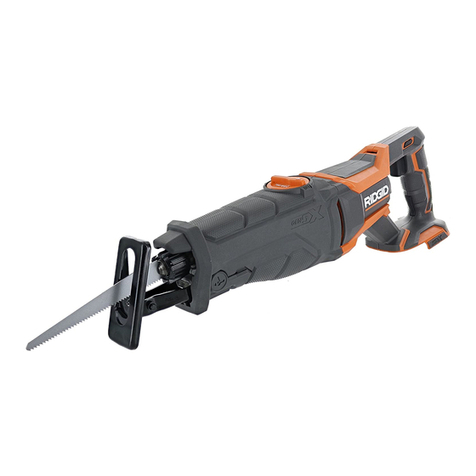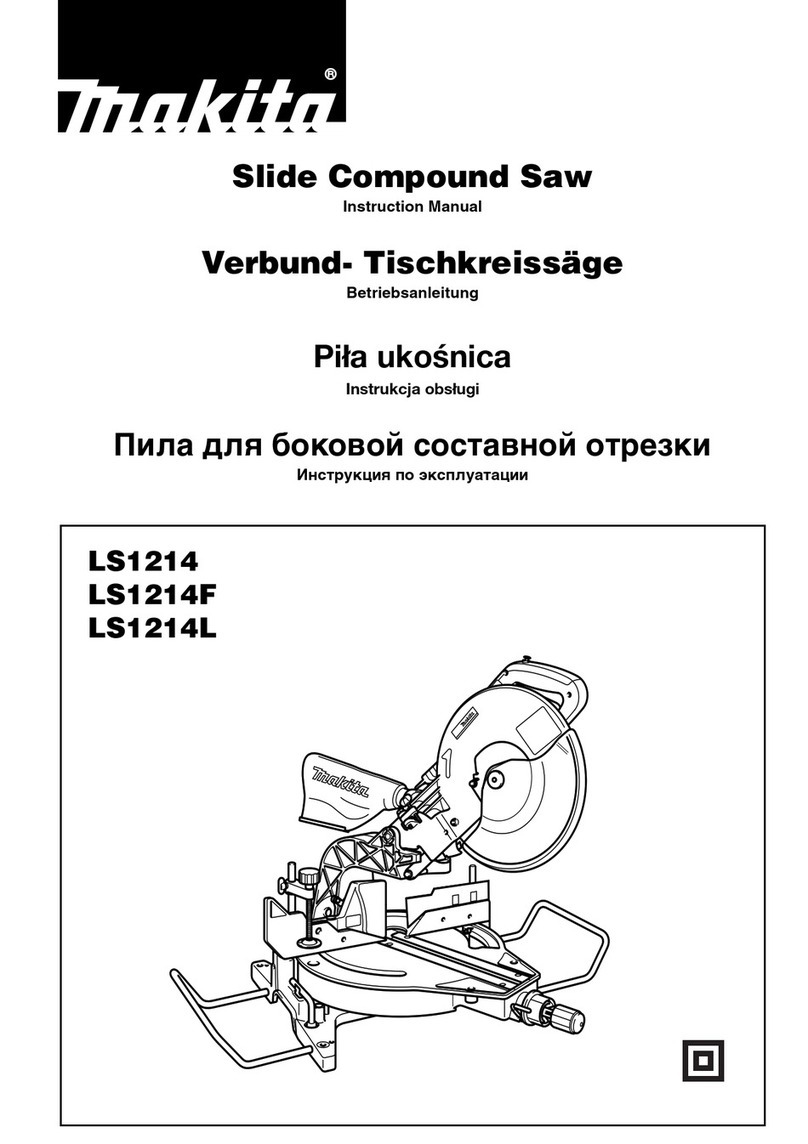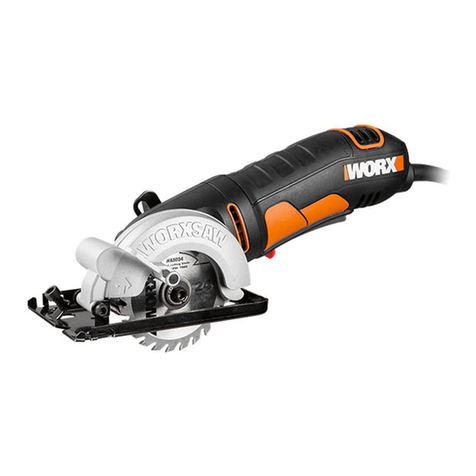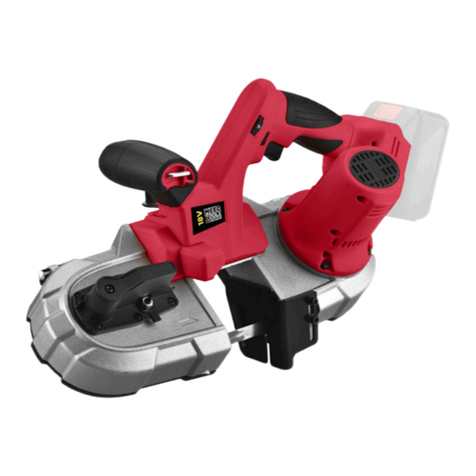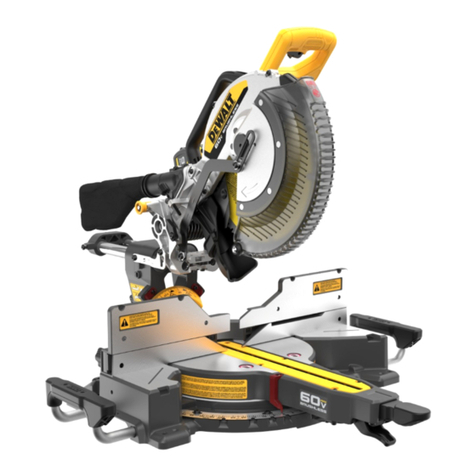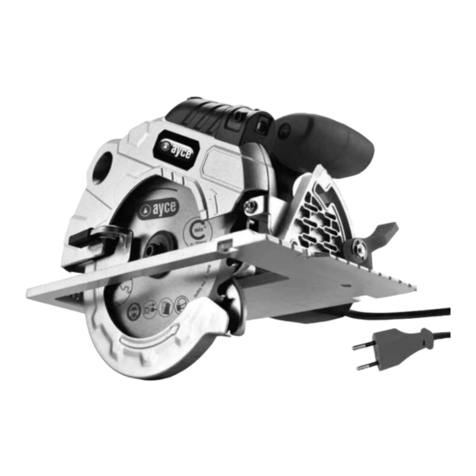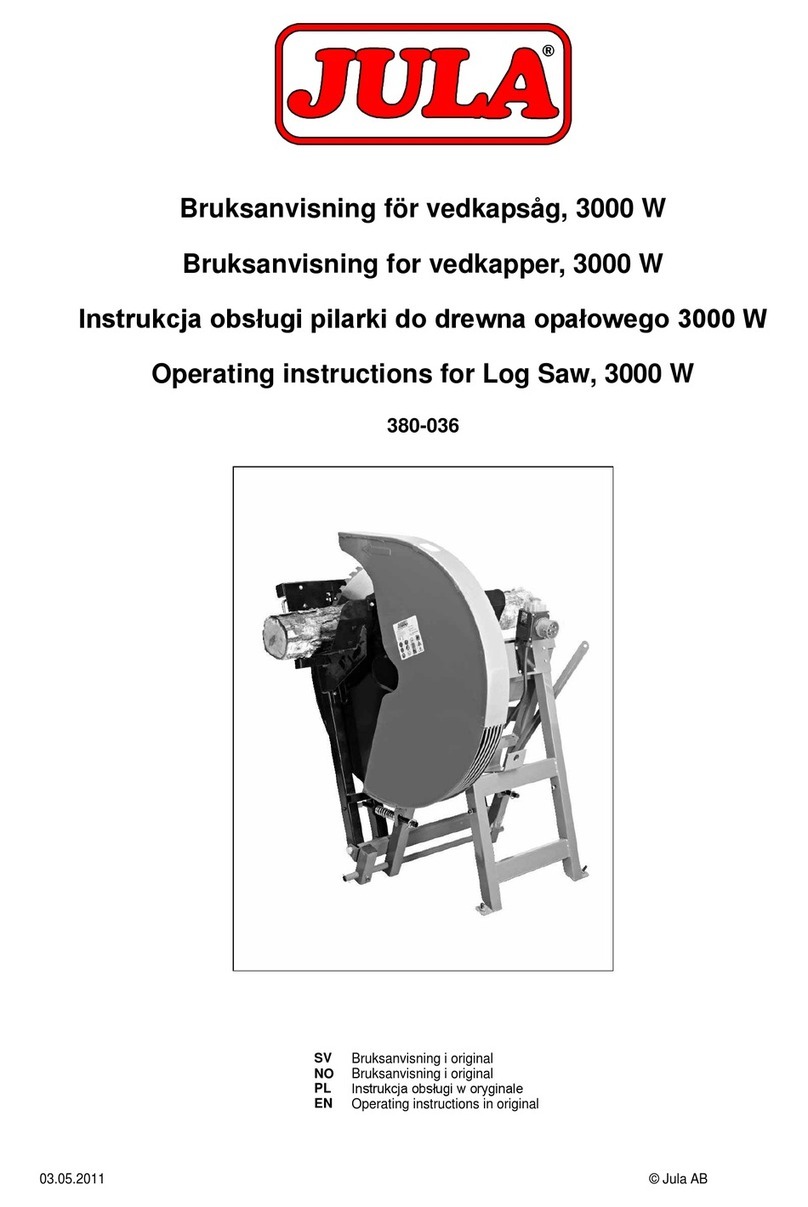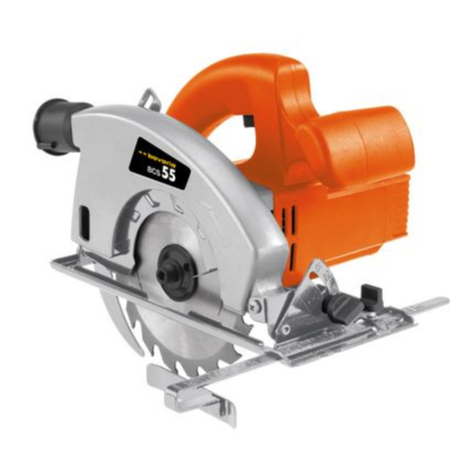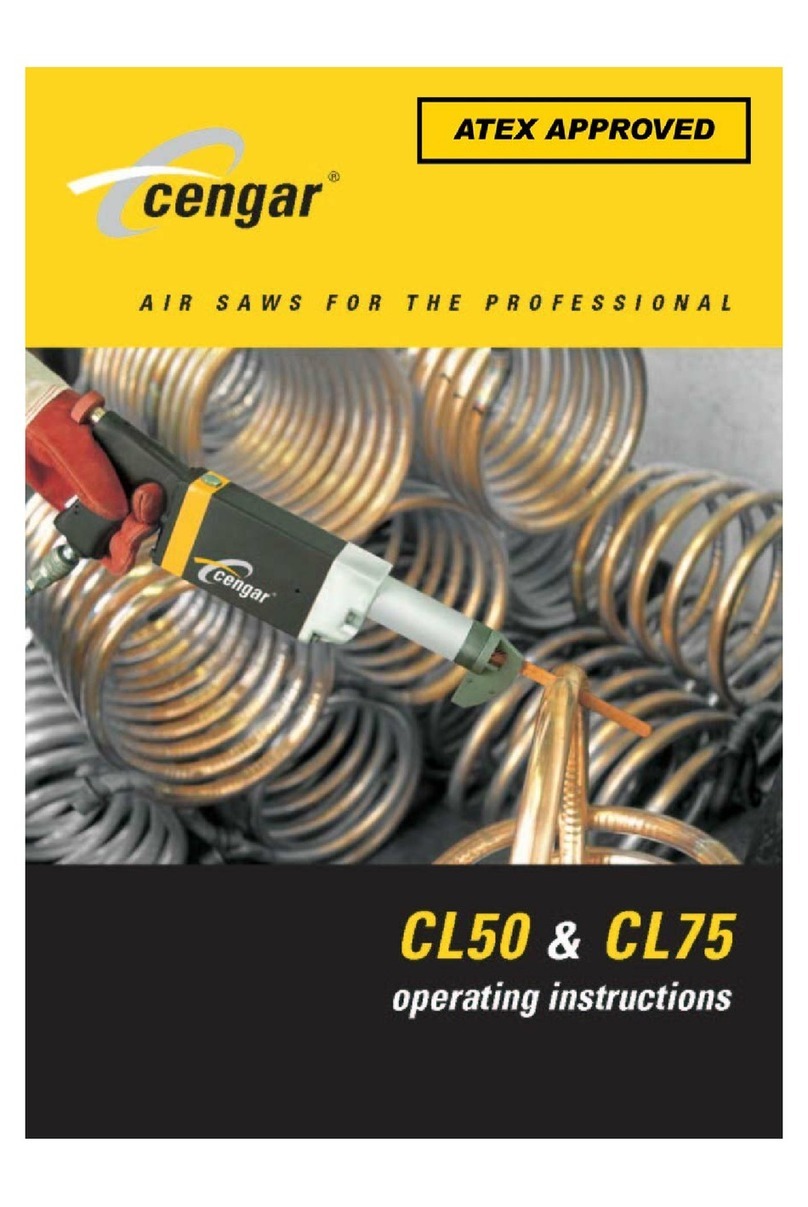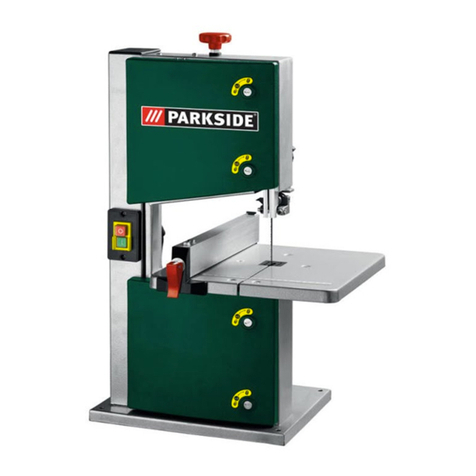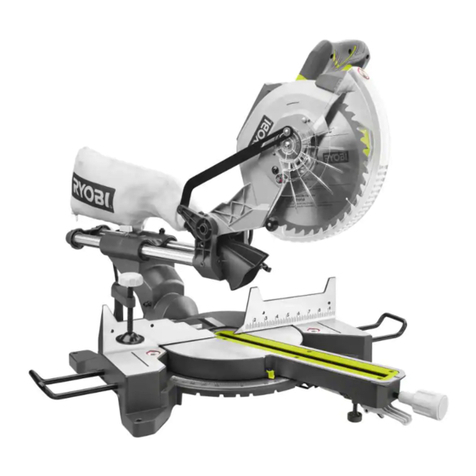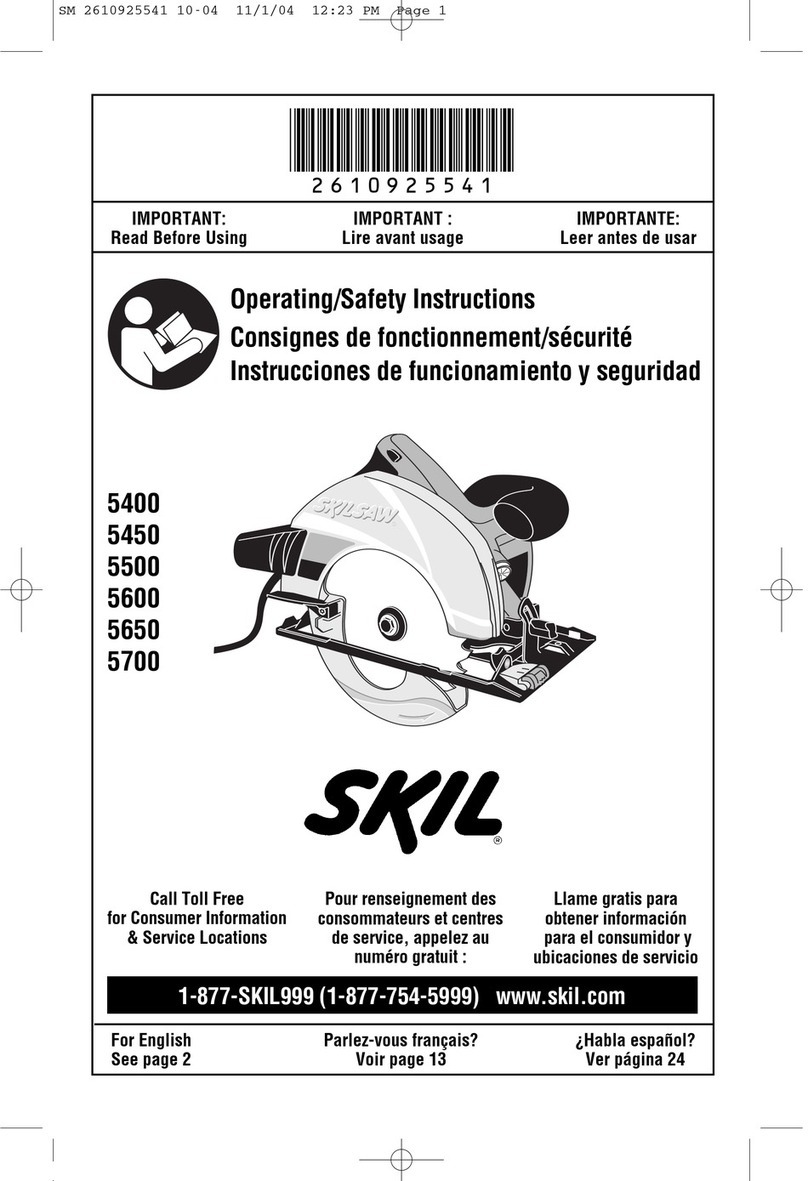Jegs 81750 User manual

Installation Instructions for 81750
Portable Cut-Off Saw
14”Blade
WARNING: When using electric tools, machines or equipment, basic safety precautions should always be followed to
reduce the risk of fire, electric shock, and personal injury.
READ ALL INSTRUCTIONS BEFORE USING THIS TOOL
1. KEEP WORK AREA CLEAN. Cluttered areas invite injuries.
2. CONSIDER WORK AREA ENVIRONMENT. Don't use power tools in damp, wet, or poorly lit locations. Don't expose
your tool to rain. Keep the work area well lit. Don’t use tools in the presence of flammable gases or liquids.
3. KEEP CHILDREN AND BYSTANDERS AWAY. All children should be kept away from the work area. Don't let them
handle machines, tools or extensions cords. Visitors can be a distraction and are difficult to protect from injury.
4. GROUNDED TOOLS must be plugged into an outlet that itself is properly installed and grounded. Grounding
provides a low-resistance path to carry electricity to ground away from the operator, should the tool malfunction
electrically. Do not remove the grounding prong from the plug or alter the plug in any way. If in doubt as to whether the
outlet is properly grounded according to code, check with a qualified electrician.
5. OBSERVE PROPER PRECAUTIONS REGARDING DOUBLE INSULATION. This tool is double insulated. It is
equipped with a polarized plug. One blade is wider than the other, so it will fit into a polarized outlet only one way. If you
have difficulty inserting the plug, try reversing it. If it still doesn't fit, do not alter the plug; have a qualified electrician
install a polarized outlet.
6. GUARD AGAINST ELECTRIC SHOCK. Prevent body contact with grounded surfaces: pipes, radiators, ranges, and
refrigerator enclosures. When your body is grounded the risk of electric shock increases. When working wherever live
electrical wires may be encountered, try to ascertain whether there is a danger of shock. Even so, DO NOT TOUCH
ANY METAL PARTS OF THE TOOL while using it. Hold the tool only by the plastic grip to prevent electric shock if you
contact a live wire.
7. DO NOT ABUSE THE CORD. Never carry your sander by the cord or pull on the cord to unplug it. Protect the cord
from potential sources of damage: heat, oil & solvents, sharp edges, or moving parts. Replace damaged cords
immediately.
8. WHEN WORKING OUTDOORS, USE AN OUTDOOR-RATED EXTENSION CORD. An extension cord rated for
outdoor use must be marked "W-A" or “W”.
9. DO NOT EXPOSE ELECTRICAL POWER TOOLS TO MOISTURE. Rain or wet conditions can cause water to enter
the tool and lead to electric shock.
10. ENSURE THE EXTENSION CORD YOU USE IS OF SUFFICIENT GAUGE FOR ITS LENGTH.
Recommended Minimum Wire Gauge for Extension Cords
Amps from Tool Nameplate
25’Length
50’Length
75’Length
100’Length
150’Length
200’Length
0-5 Amps
16 ga.
16 ga.
16 ga.
14 ga.
12 ga.
12 ga.
5.1-8 Amps
16 ga.
16 ga.
14 ga.
12 ga.
10 ga.
Do Not Use
8.1-12 Amps
14ga.
14ga.
16 ga.
10 ga.
Do Not Use
Do Not Use
12.1-15 Amps
12 ga.
12 ga.
10 ga.
10 ga.
Do Not Use
Do Not Use
15.1-20 Amps
10 ga.
10 ga.
10 ga.
Do Not Use
Do Not Use
Do Not Use
11. STORE IDLE EQUIPMENT. Store equipment in a dry area to inhibit rust. Equipment also should be in a high
location or locked up to keep out of reach of children.
12. DON'T FORCE THE TOOL. It will do the job better and more safely at the rate for which it was intended.
13. USE THE RIGHT TOOL. Don't force a small tool or attachment to do the work of a larger industrial tool. Don't use a
tool for a purpose for which it was not intended.
14. DRESS PROPERLY. Don't wear loose clothing or jewelry; they can be caught in moving parts. Protective, non-
electrically conductive gloves and non-skid footwear are recommended when working. Wear protective hair covering to
contain long hair and keep it from harm.
1-800-345-4545 jegs.com

IMPORTANT SAFETY INSTRUCTIONS
15. USE EYE PROTECTION. Use a full-face mask if the work you're doing produces metal filings, dust or wood chips.
Goggles are acceptable in other situations. Wear a clean dust mask if the work involves creating a lot of fine or coarse
dust.
16. SECURE WORK. Use clamps or a vise to hold the work. It's safer than using your hands and it frees both hands to
operate the tool.
17. DON'T OVERREACH. Keep proper footing and balance at all times. Do not reach over or across machines that are
running.
18. MAINTAIN TOOLS WITH CARE. Keep tools sharp and clean for better and safer performance. Follow instructions
for lubricating and safe performance. Follow instructions for lubricating and changing accessories. Keep handles dry,
clean and free from oil and grease.
19. AVOID UNINTENTIONAL STARTING. Be sure the switch is in the OFF position before plugging in.
20. ALWAYS CHECK AND MAKE SURE TO REMOVE ANY ADJUSTING KEYS OR WRENCHES before turning the
tool on. Left attached, these parts can fly off a rotating part and result in personal injury.
21. DO NOT USE THE TOOL IF IT CANNOT BE SWITCHED ON OR OFF. Have your tool repaired before using it.
22. DISCONNNECT THE PLUG FROM POWER BEFORE MAKING ANY ADJUSTMENTS. Changing attachments or
accessories can be dangerous if the tool could accidentally start.
23. STAY ALERT. Watch what you are doing & use common sense. Don't operate any tool when you are tired.
24. CHECK FOR DAMAGED PARTS. Before using this tool, any pad that is damaged should be carefully checked to
determine that it will operate properly and perform its intended function. Check for alignment of moving parts, binding of
moving parts, breakage of parts, mountings, and other conditions that may affect its operation. Inspect screws and
tighten any ones that are loose. Any part that is damaged should be properly repaired or replaced by an authorized
service center unless otherwise indicated elsewhere in the instruction manual. Have defective switches replaced by an
authorized service center. Don't use the tool if switch does not tum it on and off properly.
25. REPLACEMENT PARTS. When servicing, use only identical replacement parts.
26. SERVICE AND REPAIRS should be made by qualified repair technicians at an authorized repair center. Improperly
repaired tools could cause serious shock or injury.
SAFETY PRECAUTIONS FOR CUT-OFF SAW
1. Make sure the cut-off wheel is securely mounted as described in the assembly instructions before connecting the tool
to a power supply. Do not tighten wheel excessively, since this can cause cracks.
2. Check wheel for fissures and cracks, and test for normal operation prior to use.
3. Use only cut-off wheels rated for 4400 rpm or greater and manufactured in compliance with ANSI B7.1. Always store
the wheels in a dry place with little temperature variation.
4. Always ease the abrasive wheel against the work piece when starting to cut. A harsh impact can break the wheel.
5. Always press the trigger switch and allow the cut-off wheel to reach full speed before cutting.
SPECIFICATIONS
14" (355 mm) Metal Cut-Off Saw
120v. 60Hz 15 amp motor
2800 rpm no-load speed
Cuts material up to 4.25”diameter
With correct blade, can be used to cut conduit, ABS, copper pipe, even concrete
Vise assembly with quick release adjusts 0-45° for angle cutting
Max cutting depth: 110 mm @ 90° & 115 mm @ 45°
Includes
14" dia. x 1/8" thick x 1" arbor metal-cutting wheel
Vise assembly with quick release
1-800-345-4545 jegs.com

ASSEMBLY
WARNING: do not connect the saw to power source until assembly is complete. Failure to comply could result
in accidental starting and possible injury.
Cut-Off Wheel Removal
1. Be sure the tool is disconnected from the power source.
2. Raise the tool to its full open position, remove nut on the blade cover and rotate the lower wheel guard downward,
exposing the hex head bolt which secures the abrasive wheel to the wheel arbor.
3. Push in the shaft lock lever and rotate the wheel until the safety lock level engages, locking the wheel in place.
4. White holding the shaft lock lever in place, use the supplied wrench and loosen the hex head bolt by rotating it
counter clockwise. Remove the hex bolt, washer, outside flange and abrasive wheel.
Cut-Off Wheel Installation
1. Be sure the tool is disconnected from the power source.
2. Inspect the replacement wheel for defects such as cracks, chipping, and correct speed rating. If defects are found or
the speed rating is not greater than 4400 rpm discard the wheel and select another.
3. Remove any debris from the inside flange and inner washer. Position the new abrasive wheel over the inner washer
and against the inside flange.
4. Clean and align the outside flange to the wheel arbor, then slide it onto the arbor until it rests flush against the
abrasive wheel.
5. Insert the hex head bolt onto the threaded end of the wheel arbor and rotate it in a clockwise direction until snug.
Then depress the shaft lock lever to prevent the shaft from rotating, use the supplied wrench to securely tighten the hex
head bolt to hold the abrasive wheel firmly in place.
WARNING: Do not over tighten the hex bolt. Over tightening can cause the new wheel to crack, resulting in premature
failure and possible serious injury.
6. Return the wheel guard to its lowest position and replace nut to secure wheel guard.
Lock Switch
To prevent unauthorized use of the cut-off saw, install a padlock through the hole in the switch as shown below. Use
padlock with a 13/64”-shank diameter. When the lock is installed and locked, the switch is inoperable. Store the padlock
key in another location.
ADJUSTMENTS
Adjustable Stationary Vice
The adjustable stationary vise is located on the base of your cut-off saw. This vice can be rotated to attain cutting
angles from 0 to 45° and moved rearward to allow greater cutting widths.
WARNING: Always unplug the saw from power source before making adjustment or performing routine maintenance.
Failure to heed this warning can result in serious injury.
Cutting Angle Adjustment/To Adjust the Angle of Cut:
1. Using the supplied wrench, loosen hex head bolts behind the vise fence.
2. Rotate the vise fence until the desired angle of the cut is aligned with the indicator groove in the saw base.
3. Check the angle of the vise fence to the abrasive wheel using a protractor, bevel square or similar device.
4. Using the supplied wrench, securely tighten the hex head bolts holding the vise to the saw base.
To Increase the Width of Cut of the Cut-Off Saw:
1. Using the supplied wrench, remove hex head bolts securing the vise to the cut-off saw base.
2. Reposition the curved slot of the vise base with the most rearward threaded hole in the saw base and install a hex
head bolt in this hole. DO NOT TIGHTEN.
3. Align the remaining vise bolt hole with the middle-threaded hole in the saw base and install a hex head bolt.
4. Check or adjust the cutting angle and securely tighten both hex head bolts with the supplied wrench.
1-800-345-4545 jegs.com

Quick Lock/Release Vise
The cut-off saw is equipped with a quick lock/release vise system as standard equipment. With this feature, you are
able to open and close the vise quickly without repetitive turning of the vise crank handle.
Using the Quick Lock/Release Vise
To loosen:
1. Slightly release tension on the vise by rotating the crank handle counter-clockwise 1/2 to 1 tum.
2. Lift up the quick lock/release lever and pull back on crank handle to slide open the vise.
To tighten:
1. Push the crank handle forward to slide the vise against the work piece.
2. Push down on the quick lock/release lever to engage its threads with vise screw.
3. Rotate the crank handle clockwise to tighten the vise against the work pieces.
Adjustable Positive Depth Stop
The adjustable depth stop is threaded into the base of the saw at the rear. By raising and lowering the depth stop bolt
with a wrench you can control how far the abrasive wheel travels when the saw handle is depressed.
This feature is particularly useful:
to increase wheel travel as the abrasive wheel wears
to cinch up the saws handle against the transport chain when moving the saw or when storing
to limit travel of the abrasive wheel after installation of a new abrasive wheel
OPERATING
Power supply
Before operating the cut-off saw, check the power supply and make sure it meets the requirements listed on the
nameplate. A substantial voltage drop will cause loss of power and the saw to overheat.
Common causes of power loss and saw overheating is insufficient extension cord size and multiple tools operating from
the same power source.
Switch
To start the tool, completely depress the trigger switch located in the saw handle.
To stop the tool, release the trigger switch completely.
Cutting
WARNING: Do not attempt to cut wood or masonry with this saw. Never cut magnesium or magnesium alloy with this
tool. Failure to comply with this warning could result in serious injury.
1. Secure the tool in place to prevent saw movement or tipping during the cutting procedure.
2. Firmly secure the material to be cut using the saw’s vise.
WARNING: Large, circular, or irregularly shaped material may require additional means of clamping to be secured in
place for cutting. Use C-clamps and blocks to hold material securely. Failure to comply could result in serious injury.
3. Start the saw by fully depressing the trigger switch and allow the cut-off wheel to come up to full speed before
contacting wheel to material.
4. Slowly push down the saw arm handle until the cut-off wheel contacts the material being cut. Use a steady and even
amount of pressure to obtain a uniform cut. Never force the wheel into the material. When the cut is complete, release
the trigger switch and allow the wheel to stop before raising it to the full open position.
DANGER: Do not touch the cut material until it cools or you will be burned. Failure to heed this warning will result in
serious personal injury.
1-800-345-4545 jegs.com

MAINTENANCE
WARNING: Provide adequate ventilation when using solvents. Do not use solvents to clean plastic pans. Make sure
the tool operates properly. Periodically check listed screws and bolts for tightness. Apply dry lubricant monthly to the
points to extend saw service life.
Lubrication points:
Vise screw shaft front
Vise clamp rotation clamp
Remove the brush caps at regular intervals to check the carbon brushes. When the brushes are worn to the
Standard Line, as indicated on the brush, replace them.
1-800-345-4545 jegs.com
Table of contents
Other Jegs Saw manuals



